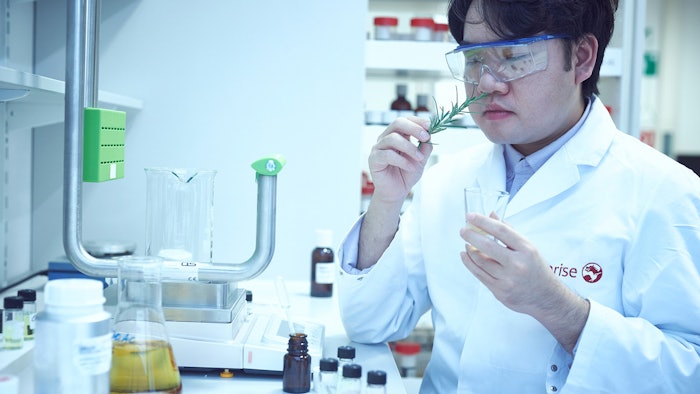
Symrise has conducted interviews with members of its R&T department in the Taste, Nutrition & Health segment to discuss the blend of scientific, technological and human factors that power flavor creation. The compiled essay highlights how the creation of taste solutions adds to the development of consumer-preferred products.
Related: Symrise Achieves Highest Science-based Targets Initiative Standard
Katharina Reichelt, Ph.D., director of Functional Flavor Solutions, R&T Taste, Nutrition and Health at Symrise, said, “The overall process of creating a flavor forms a highly complex task. It involves many different technologies and processes. We like to compare it to the different instruments in an orchestra contributing to an enjoyable piece of music. In this essay, our R&T colleagues explain how they create their own very special harmony. They are revealing some of the secrets behind taste solutions.”
Combining human senses and science power
“Science-powered flavor creation” begins when the R&T department receives a project brief with defined objectives and characteristics. It then works towards the end goal to provide its customer with a consumer-preferred solution that meets their particular specifications.
Reichelt explains, “We start the process by decoding the inherent principles of a sample that meets some of the characteristics requested by the customer. This helps us to get to know the taste actives and sensory key drivers. We also learn, which ingredients play a relevant role for the flavor. For this, we use human senses in synergy with technology.”
Creating flavors through science and nature
Key technologies, such as LC-Taste (liquid chromatography – taste) and GC-O (gas chromatography – olfactometry) combine chemical separation methods with sensory analysis, while trained experts identify which ingredients impart the different tastes and smells. Symrise uses artificial intelligence to assist flavor creators, with proprietary digital tools like predictive modeling. They help screening the existing Symrise portfolio and find suitable ingredients that the experts can use to create a flavor.
‘Real life’ behavior also forms an important part in the performance of a flavor. Factors such as saliva and mouth temperature can substantially affect taste. For this reason, R&T uses close-to-nature technologies, such as an artificial mouth model, to gain important information about how a flavor behaves.
Equipped with an ingredient list created by these chromatographic analyses, sensory, predictive modeling, artificial mouth model and authenticity tests, the flavor creators can start to create the flavor. Finding a 100% match takes some manual fine-tuning of ingredients by flavorists, who can access a library of ingredients that constantly evolves as new natural raw materials are identified.
Sylvia Barnekow, director of Food & Science Application Technology, R&T Taste, Nutrition and Health at Symrise, said, “Of course, before we can use a newly developed flavor, we need to know how it develops over time and under different environmental influences. We use proprietary technology to conduct accelerated stability tests, predict shelf life and assess behavior under variable conditions such as temperature and humidity. Only after another round of sensory testing, we will incorporate the taste in an end product application. After that, we ask a panel of consumers to test it and to give their own feedback.”
Want to know everything going on in flavor & fragrance? Sign up for P&F+'s newsletter. You can also follow along on Instagram and LinkedIn.










